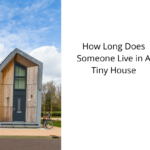Beginners Guides
How Can I Buy A Tiny House
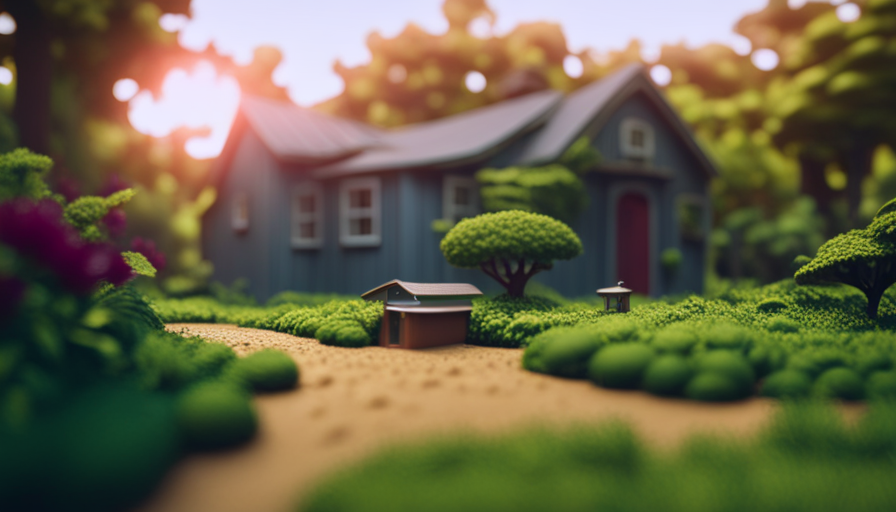
Are you aware that the interest in small living spaces, often referred to as the tiny house movement, has seen a consistent rise in popularity throughout the last ten years? Indeed, a recent study has found that more than 63% of people in the United States express an interest in inhabiting a tiny house.
If you’re one of those individuals considering the purchase of a tiny house, you’ve come to the right place. In this article, I will provide you with a comprehensive guide on how to buy a tiny house. From determining your budget and financing options to finding a reputable builder or DIY resources, I will walk you through the entire process.
We’ll also discuss important factors such as location, legal considerations, and space requirements. Additionally, I’ll provide tips on off-grid living and connecting to utilities, as well as storage and organization solutions.
Lastly, we’ll delve into the logistics of moving and settling into your new tiny house. So, let’s dive in and explore the world of tiny house living together.
Key Takeaways
- Determine budget and explore financing options such as personal loans, RV loans, or home equity loans.
- Research different types and styles of tiny houses, considering factors like size, design, mobility, and layout.
- Find a reputable tiny house builder or utilize DIY resources like the Tiny House Builder Directory or online DIY plans.
- Consider location and legal considerations, such as zoning laws, building codes, and permits required for tiny house placement.
Determine Your Budget and Financing Options
Figuring out your budget and exploring different financing options is crucial when it comes to buying a tiny house. Determining affordability is the first step in this process. You need to assess your current financial situation and determine how much you can comfortably spend on a tiny house. Consider your income, expenses, and savings to get a clear understanding of what you can afford.
Once you have a budget in mind, it’s time to explore loan options. There are several ways to finance a tiny house, including personal loans, RV loans, and home equity loans. Personal loans are unsecured and can be used for any purpose, while RV loans are specifically designed for mobile homes. Home equity loans use the equity in your current home to secure a loan for your tiny house. Research different lenders and compare interest rates, terms, and repayment options to find the best loan for your needs.
Transitioning into the next section, it’s important to research different types and styles of tiny houses. By understanding the various options available, you can narrow down your choices and find the perfect tiny house that fits your budget and lifestyle.
Research Different Types and Styles of Tiny Houses
Exploring various types and styles of compact dwellings can provide you with valuable insights into the world of minimalist living. When researching different types and styles of tiny houses, it’s important to consider your personal preferences and needs.
Here are four key considerations to keep in mind:
-
Size: Tiny houses come in various sizes, ranging from as small as 80 square feet to around 400 square feet. Think about how much space you require and what amenities are essential for your lifestyle.
-
Design: There’s a wide range of designs available, from traditional-looking cottages to modern, sleek structures. Consider the architectural style that appeals to you and matches your aesthetic taste.
-
Mobility: Some tiny houses are built on wheels, allowing for easy mobility and flexibility. Others are designed to be permanent structures. Determine whether you want a mobile tiny house or a stationary one.
-
Layout: Tiny houses require smart and efficient layouts to optimize space. Look for designs that maximize functionality and storage options, such as loft beds, hidden storage compartments, and multipurpose furniture.
Living in a tiny house has its pros and cons. On the positive side, it promotes a simpler lifestyle, reduces environmental impact, and offers financial freedom. However, it can also be challenging to adjust to the limited space and lack of privacy.
Transitioning into finding a reputable tiny house builder or DIY resources, it’s crucial to consider your budget and financing options.
Find a Reputable Tiny House Builder or DIY Resources
Discovering a trustworthy builder or reliable DIY resources can lead you on an exciting journey towards creating your dream compact dwelling. When it comes to finding a reputable tiny house builder, it’s important to do thorough research and seek recommendations from others who have already built their own tiny homes. One helpful resource is the Tiny House Builder Directory, which provides a comprehensive list of builders across the country, along with reviews and ratings from previous customers. This directory allows you to compare different builders and find the one that best fits your needs and budget.
If you’re more inclined to take the do-it-yourself route, there are plenty of DIY tiny house plans available online. These plans provide detailed instructions and blueprints, allowing you to build your own tiny house from scratch. Websites like Tiny House Design and The Tiny Life offer a wide selection of plans to choose from, ranging from simple and minimalist designs to more intricate and customized options.
By exploring these resources, you can gain valuable insights into the building process and make informed decisions about your tiny house project. Once you have a trustworthy builder or DIY plan in mind, it’s time to consider the location and legal considerations for your tiny house. Transitioning into the next section, it’s important to carefully evaluate zoning regulations and any permits that may be required for your chosen location.
Consider Location and Legal Considerations
When it comes to finding the perfect spot for your compact dream home, you’ll need to consider the location and legal aspects to ensure a smooth transition into your new lifestyle.
Choosing the right location is crucial for your tiny house. Start by evaluating your needs and preferences. Do you want to be close to nature or in a bustling city? Consider factors such as climate, proximity to amenities, and access to resources.
Additionally, understanding legal regulations is vital to avoid any complications. Research zoning laws and building codes in your desired area to ensure that you can legally park or build your tiny house. Some areas may have restrictions on the size of the house or where it can be located. It’s also important to check if you need any permits or licenses.
By carefully considering these location and legal aspects, you can ensure a smooth transition into your tiny house lifestyle. Assessing your needs and space requirements will be the next step in creating your ideal compact living space.
Assess Your Needs and Space Requirements
Determining the perfect size and layout for your compact dream home requires a deep understanding of your personal desires and space requirements. When it comes to living in a tiny house, space optimization and minimalist living are key.
Here are three important factors to consider when assessing your needs and space requirements:
-
Functionality: Think about how you plan to use your tiny house. Will it be a full-time residence or a vacation home? Consider the number of bedrooms, bathrooms, and any special features you may need, such as a home office or a kitchen with ample storage.
-
Storage Solutions: In a small space, maximizing storage is crucial. Look for creative storage solutions like built-in cabinets, folding furniture, or multi-purpose pieces. Consider utilizing vertical space with loft areas or shelving units.
-
Flexibility: As your needs evolve over time, it’s important to have a flexible living space. Look for customizable layouts that can adapt to different purposes or allow for future expansions. Flexibility also includes considering outdoor spaces like decks or patios to extend your living area.
Assessing your needs and space requirements is the first step towards designing and customizing your tiny house to perfectly fit your lifestyle.
Design and Customize Your Tiny House
Now that you have assessed your needs and space requirements for a tiny house, it is time to move on to the exciting stage of designing and customizing your dream home. This is where you can really let your creativity shine and make your tiny house a reflection of your personal style and preferences.
When it comes to designing a tiny house, there are a few key tips to keep in mind. First, prioritize functionality and make the most of every inch of space. Think about clever storage solutions, such as built-in cabinets and multipurpose furniture. Consider using vertical space by incorporating loft areas or high shelves.
Another important aspect to consider is the layout of your tiny house. Think about how you will use each area and ensure that there is a good flow between spaces. Keep in mind that open floor plans can create a sense of spaciousness in a small area.
To help spark your creativity, here is a table showcasing some design ideas and space-saving solutions:
| Design Tips | Space-Saving Solutions |
|---|---|
| Use light colors | Build in storage |
| Utilize natural light | Foldable furniture |
| Opt for multipurpose | Loft areas |
| furniture | High shelves |
| Incorporate outdoor | Hidden storage |
| living space | solutions |
With these design tips and space-saving solutions in mind, you are well on your way to creating the perfect tiny house. In the next section, we will discuss how to plan for off-grid living or connection to utilities, ensuring that your tiny house is set up for a comfortable and sustainable lifestyle.
Plan for Off-Grid Living or Connection to Utilities
To ensure your tiny house is equipped for off-grid living or connection to utilities, you’ll want to consider your energy needs and options, just like a camper deciding whether to rely on solar power or plug into a campground’s electrical hookup.
Off-grid living means being self-sufficient and not relying on public utilities such as electricity, water, or sewage. This lifestyle offers the freedom to live anywhere without being tied to traditional infrastructure. However, it also requires careful planning and investment in alternative energy sources, such as solar panels, wind turbines, or propane generators.
On the other hand, living connected to utilities provides convenience and reliability. You can enjoy the comforts of a regular home with access to reliable electricity, water, and sewage systems. It eliminates the need for additional investments in alternative energy sources and reduces maintenance responsibilities. However, you will be tied to the availability and reliability of public utilities.
When considering off-grid vs. connected living, weigh the pros and cons based on your preferences, location, and budget.
Transitioning into the subsequent section about storage and organization solutions, it’s important to consider how to optimize space in your tiny house.
Consider Storage and Organization Solutions
When it comes to optimizing space in your tiny home, it’s crucial to consider storage and organization solutions. In such a small living space, every inch counts, and having effective storage solutions can make a world of difference.
Here are some storage and organizing tips to help you make the most of your tiny house:
-
Utilize vertical space: Install shelves, hooks, and hanging organizers on walls to maximize storage. Vertical storage solutions can help keep your belongings organized and easily accessible.
-
Invest in multi-purpose furniture: Look for furniture pieces that serve multiple functions, such as a bed with built-in storage underneath or a coffee table with hidden compartments. These versatile pieces can help you save space while providing ample storage options.
-
Use storage containers and bins: Clear plastic bins and storage containers can be a lifesaver in a tiny home. They allow you to neatly organize your belongings and keep them easily accessible. Label the containers to quickly find what you need.
By implementing these storage solutions and organizing tips, you can make the most of your tiny house and create a clutter-free living space. With your belongings neatly organized, you’ll be better prepared for the logistics of moving and settling into your tiny house.
Prepare for the Logistics of Moving and Settling into Your Tiny House
Get ready to embark on the exciting journey of moving into your cozy dream home, and remember, "Out with the old, in with the new" as you prepare for the logistics of settling into your tiny haven. Moving into a tiny house requires careful planning and organization to ensure a smooth transition. Here are some key considerations to help you navigate the moving logistics and settling process.
First, it’s important to think about the size and weight of your belongings. Since space is limited in a tiny house, you’ll need to prioritize what items are essential and let go of the rest. Consider donating or selling items that won’t fit or aren’t necessary in your new space.
Next, create a detailed plan for moving day. Map out the route to your new location and ensure that the tiny house can be safely transported. If you’re hiring a professional moving company, communicate the dimensions and weight of your tiny house to ensure they have the necessary equipment and expertise.
Once you’ve arrived at your new location, take the time to settle in and make your tiny house feel like home. Organize your belongings in a way that maximizes space and functionality. Consider using storage solutions such as built-in cabinets, wall-mounted shelves, and multi-purpose furniture.
To emphasize the importance of organization and maximize space, here’s a table showcasing some storage ideas:
| Storage Idea | Description |
|---|---|
| Loft Storage | Utilize the vertical space by creating storage in the loft area. |
| Under Stair Storage | Install drawers or shelves under the stairs for additional space. |
| Wall-Mounted Hooks | Hang items like coats and bags on hooks to free up floor space. |
| Foldable Furniture | Opt for foldable tables and chairs that can be stored when not in use. |
As you settle into your tiny house, embrace the tiny house lifestyle and enjoy the benefits of simplified living. With thoughtful planning and organization, your tiny haven will become a cozy and functional space that brings you joy and fulfillment.
Embrace the Tiny House Lifestyle and Enjoy the Benefits
Immerse yourself in the tiny house lifestyle and savor the countless rewards that come with embracing a simpler, more intentional way of living. When you downsize to a tiny house, you open up a world of benefits that go far beyond just having a smaller space.
Here are a few ways that simplifying your life by living in a tiny house can have a positive impact:
-
Financial freedom: By choosing to live in a tiny house, you can drastically reduce your monthly expenses. With a smaller mortgage or no mortgage at all, you can save money for other important things in life, such as travel or pursuing your passions.
-
Environmental sustainability: Tiny houses have a smaller carbon footprint compared to traditional homes. With less square footage to heat, cool, and maintain, you can significantly reduce your energy consumption and live a more eco-friendly lifestyle.
-
More time and freedom: With fewer possessions and less space to clean and maintain, you’ll find yourself with more time and freedom to focus on the things that truly matter to you. Whether it’s spending quality time with loved ones, pursuing hobbies, or simply enjoying the outdoors, a tiny house can provide the space and flexibility to do so.
So, if you’re ready to simplify your life and reap the benefits of downsizing, consider embracing the tiny house lifestyle. It’s a decision that can lead to financial freedom, environmental sustainability, and a newfound sense of freedom and fulfillment.
Frequently Asked Questions
How much does a tiny house typically cost?
Typically, the cost of a tiny house varies depending on factors such as size, materials, and location. However, a cost comparison can help determine the most affordable option. Financing options like loans and grants are also available.
Can I get a mortgage to finance a tiny house?
Yes, you can finance a tiny house with a mortgage. There are various financing options available for tiny houses, allowing you to make your dream of owning a tiny house a reality.
Are there any legal restrictions on living in a tiny house?
Zoning regulations and building codes vary by location and may restrict living in a tiny house. It is important to research and comply with these regulations to ensure that you can legally live in a tiny house.
How long does it take to build a tiny house?
It typically takes around 3 to 6 months to build a tiny house, depending on the complexity and size. The construction process involves planning, acquiring materials, and executing the build with attention to detail and craftsmanship.
What are some common challenges of living in a tiny house?
Living in a tiny house poses challenges such as limited space management. Downsizing has pros and cons, with benefits like lower costs and reduced environmental impact, but it requires careful organization and minimalism.
Conclusion
In conclusion, embarking on the journey to buy a tiny house can be an exciting and rewarding experience. By determining your budget and researching different types and styles, you can make an informed decision. Finding a reputable builder and considering location and legal considerations are also important factors to consider. Assessing your needs, planning for off-grid living, and considering storage solutions will help you create a space that meets all your requirements. Finally, embracing the tiny house lifestyle will allow you to enjoy the benefits of minimalism, sustainability, and financial freedom.
So, step into the world of tiny houses and start living large in a small space!
Hi, I’m Emma. I’m the Editor in Chief of Tiny House 43, a blog all about tiny houses. While tree houses are often associated with childhood, they can be the perfect adult retreat. They offer a cozy space to relax and unwind, surrounded by nature. And since they’re typically built on stilts or raised platforms, they offer stunning views that traditional homes simply can’t match. If you’re looking for a unique and romantic getaway, a tree house tiny house might just be the perfect option.
Beginners Guides
How Did the City of Fresno to Tiny House
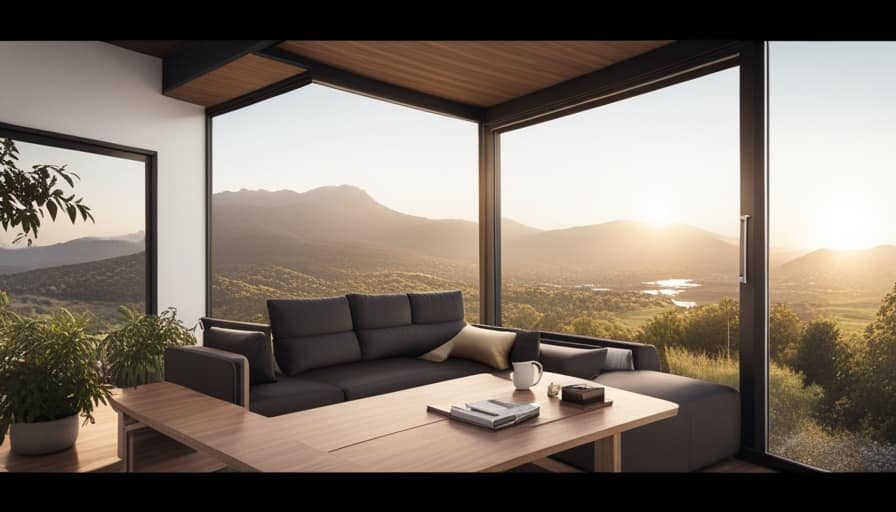
As someone living in Fresno, I have always believed in the saying ‘home is where the heart is.’ Thanks to the city’s forward-thinking housing policies, even the smallest of homes can now have a place to call their own.
In this article, we’ll explore how Fresno has embraced the tiny house movement, collaborating with advocates and implementing innovative zoning regulations. Join me as we delve into the challenges faced and the remarkable progress made towards building a thriving tiny house community in Fresno.
Key Takeaways
- Fresno has implemented housing policies and initiatives aimed at increasing access to affordable housing, including energy-efficient homes and tiny house construction.
- Collaboration with tiny house advocates is crucial for effective housing solutions, as they bring valuable insights and innovative ideas to the table.
- Zoning regulations and permitting processes in Fresno are designed to engage the community and ensure that their needs and preferences are considered.
- Fresno has created innovative tiny house communities that focus on sustainability and affordability, incorporating features such as solar panels and rainwater harvesting systems.
The Shift in Housing Policies
I’m excited to talk about the changes happening in housing policies.
One of the most pressing issues in our society today is housing affordability. Many individuals and families struggle to find affordable housing options, causing financial strain and instability.
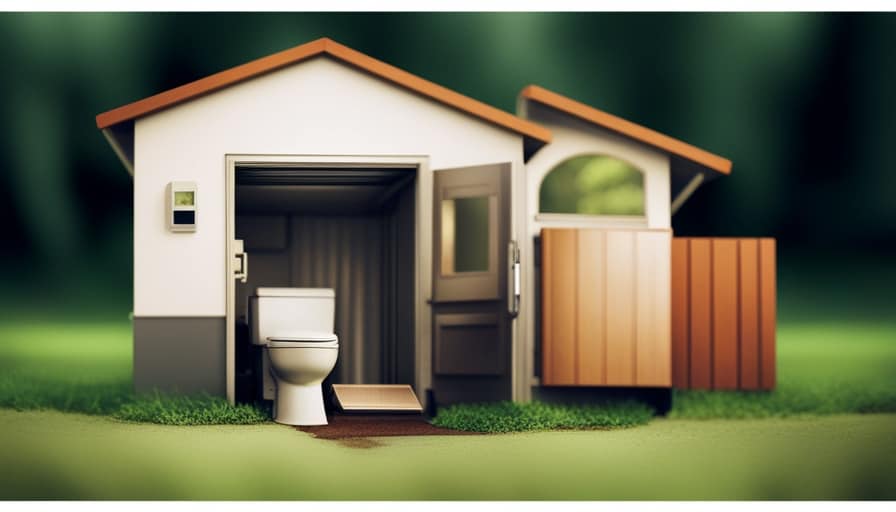
As a result, there’s been a shift in housing policies towards promoting sustainable living and increasing access to affordable housing. Governments and organizations are recognizing the importance of creating housing opportunities that are both environmentally friendly and economically viable.
This involves initiatives such as promoting energy-efficient homes, supporting the construction of tiny houses, and implementing rent control measures.
Collaborating With Tiny House Advocates
Collaborating with tiny house advocates has been crucial in implementing effective housing solutions in the city of Fresno. Through collaboration strategies and community engagement, we’ve been able to work hand in hand with advocates to address the unique challenges and opportunities that tiny houses present.
These collaborations have allowed us to tap into the knowledge and expertise of tiny house advocates, who bring valuable insights and innovative ideas to the table. We’ve engaged in open and transparent dialogues, fostering a sense of trust and understanding between all parties involved.
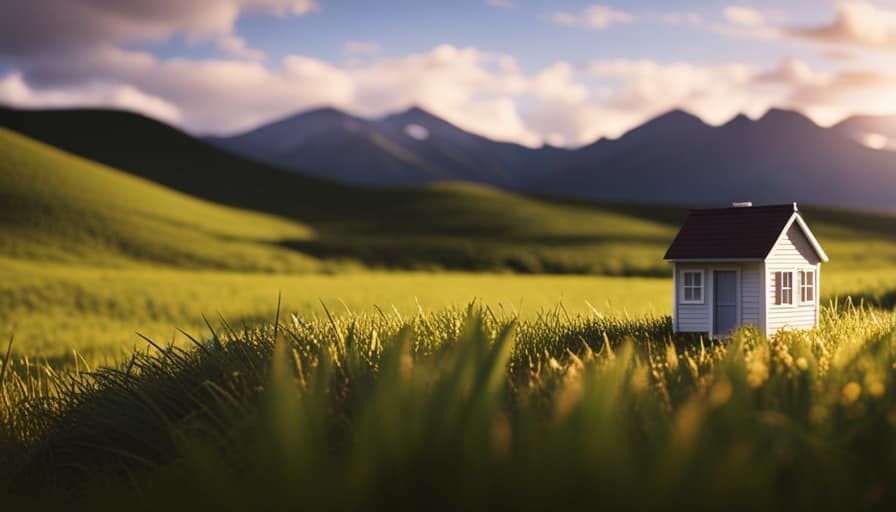
Zoning Regulations and Permitting Processes
Navigating the complexities of zoning regulations and permitting processes can be challenging, but it’s essential for ensuring the successful implementation of tiny house communities in the city of Fresno.
To streamline processes and make it easier for individuals and organizations to develop tiny house communities, the city of Fresno has taken steps to engage with the community and actively involve them in the decision-making process.
This includes hosting public meetings, soliciting feedback, and conducting thorough assessments of potential sites for tiny house communities. By involving the community in these processes, the city of Fresno can address any concerns or issues that may arise, while also ensuring that the needs and preferences of the community are taken into consideration.
This collaborative approach not only helps to build trust and support, but also allows for a more efficient and effective implementation of tiny house communities in the city.
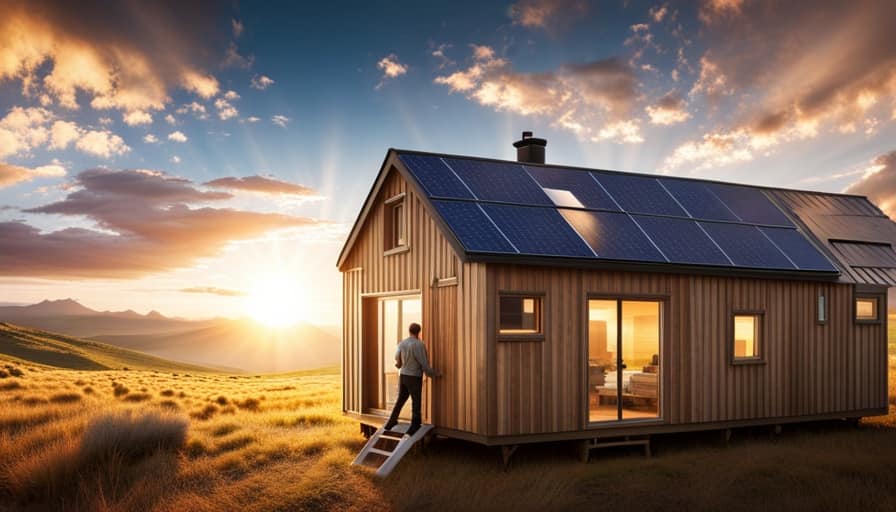
Innovative Tiny House Communities in Fresno
One innovative approach to creating tiny house communities in Fresno is through the use of sustainable materials and renewable energy sources. These communities are designed with a focus on sustainability, incorporating features such as solar panels, rainwater harvesting systems, and energy-efficient appliances. By utilizing these sustainable practices, residents can reduce their carbon footprint and live in homes that are environmentally friendly.
Additionally, these communities aim to provide affordable living options for individuals who may not be able to afford traditional housing. Through the use of smaller, more efficient spaces, the cost of construction and maintenance is reduced, making it more accessible for those on a limited budget.
These innovative tiny house communities in Fresno are paving the way for sustainable housing and promoting affordable living for all.
Transitioning into the next section, let’s explore the challenges faced in building a tiny house movement.
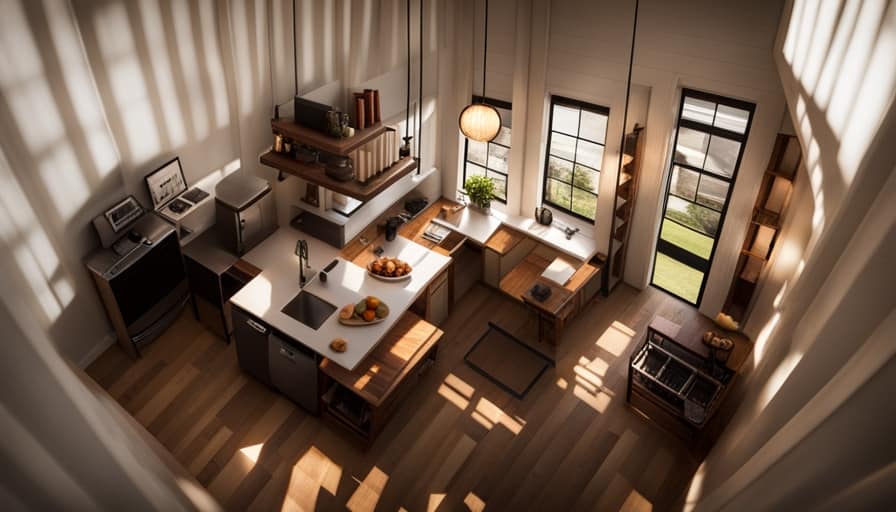
Overcoming Challenges and Building a Tiny House Movement
Confronting obstacles and working together, we can create a thriving tiny house movement in Fresno.
To overcome challenges and build a sustainable and affordable housing solution, we must first address zoning regulations. Currently, many cities have restrictions that make it difficult to build tiny houses on a permanent foundation. By advocating for changes in zoning laws, we can create more opportunities for tiny house communities.
Additionally, we need to address financing options for individuals interested in building tiny houses. Traditional lending institutions may not provide loans for these unconventional homes, so alternative financing options must be explored. Collaborating with local government, community organizations, and financial institutions can help us develop innovative solutions to overcome these challenges.
Frequently Asked Questions
How Long Does It Typically Take to Build a Tiny House?
Typically, it takes around 2-4 months to build a tiny house. The building timeline can vary based on factors like design complexity, availability of materials, and contractor availability. Cost considerations include materials, labor, and permits.
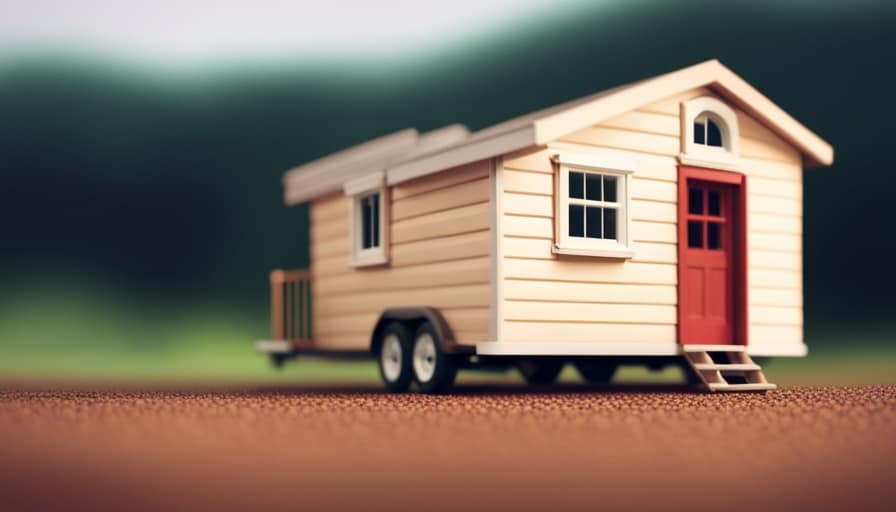
Are There Any Specific Requirements for the Size or Design of a Tiny House in Fresno?
In Fresno, specific requirements exist for the size and design of tiny houses. The city has set guidelines to ensure safety and conformity. Meeting these requirements is crucial to obtaining necessary permits and building a legally compliant tiny house.
Can I Legally Live in a Tiny House on Wheels in Fresno?
Yes, you can legally live in a tiny house on wheels in Fresno. While specific regulations may vary, other cities have implemented tiny house regulations with benefits such as affordability, sustainability, and minimal environmental impact.
How Can I Find Resources and Support for Building My Own Tiny House in Fresno?
Finding local workshops and connecting with tiny house builders in Fresno is crucial for building my own tiny house. Through thorough research and analytical thinking, I can discover resources and support to ensure a successful project.
Are There Any Financial Incentives or Grants Available for Individuals Interested in Building a Tiny House in Fresno?
There are financial assistance programs and grants available for individuals interested in building a tiny house in Fresno. It’s important to familiarize yourself with the building regulations and requirements to ensure compliance.
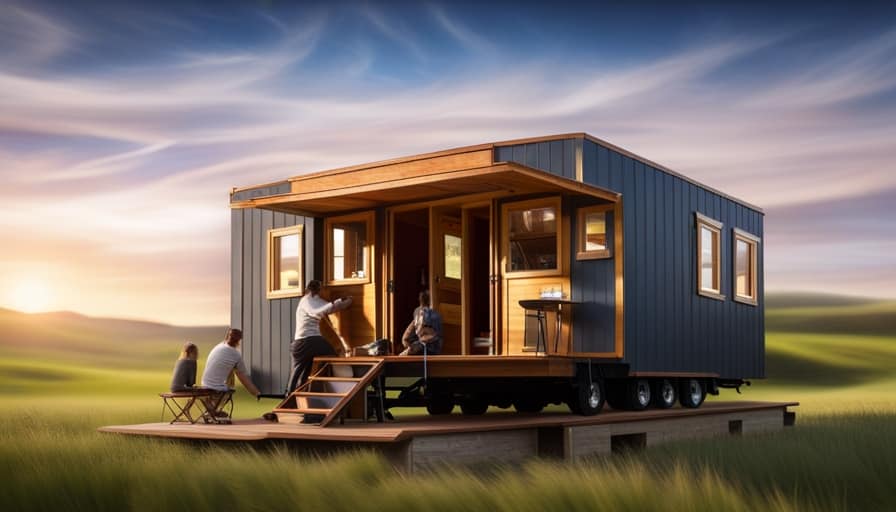
Conclusion
In conclusion, the city of Fresno has successfully embraced the tiny house movement through a shift in housing policies, collaboration with advocates, and innovative communities.
The zoning regulations and permitting processes have been streamlined to accommodate tiny house living. Despite challenges, the city has built a strong foundation for the tiny house movement to thrive.
As the saying goes, "The journey of a thousand miles begins with a single step," and Fresno has taken that step towards a more sustainable and affordable housing solution.
I’m Theodore, and I love tiny houses. In fact, I’m the author of Tiny House 43, a book about tiny houses that are also tree houses. I think they’re magical places where imaginations can run wild and adventures are just waiting to happen.
While tree houses are often associated with childhood, they can be the perfect adult retreat. They offer a cozy space to relax and unwind, surrounded by nature. And since they’re typically built on stilts or raised platforms, they offer stunning views that traditional homes simply can’t match.
If you’re looking for a unique and romantic getaway, a tree house tiny house might just be the perfect option.
Beginners Guides
How Do I Get Rid of Tiny Black Flies in My House

- Health risks associated with tiny black flies in the house
- Effective methods to prevent and control the presence of black flies in homes or gardens
I have tried every possible solution, but those annoying tiny black flies refuse to leave my house!
If you’re dealing with the same frustrating problem, don’t worry – I’ve got you covered.
In this article, I’ll share my expert knowledge on identifying these pesky bugs, understanding the causes of their infestations, and provide you with both natural and chemical remedies to banish them for good.
Say goodbye to those annoying flies and hello to a fly-free home!
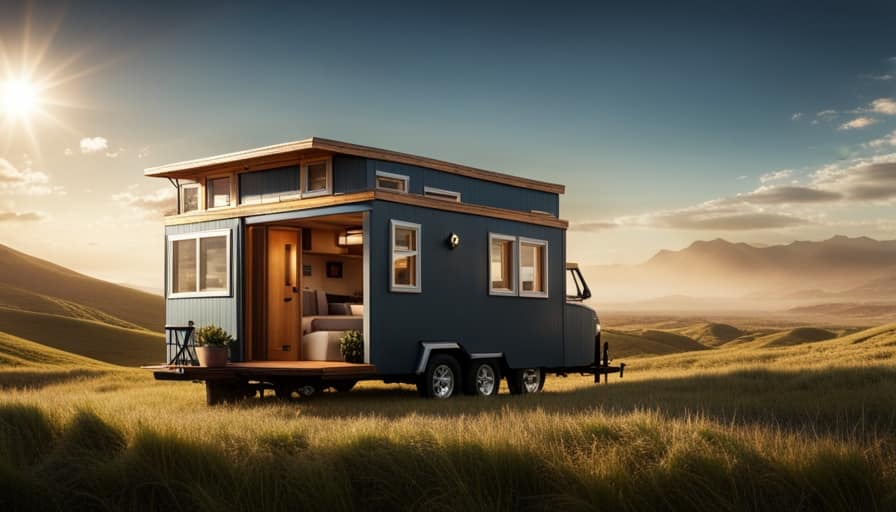
Key Takeaways
- Identify and eliminate breeding grounds by removing standing water and damp areas.
- Use natural remedies like homemade fly traps with apple cider vinegar and essential oils to repel flies.
- Consider using chemical treatments designed to kill black flies, following the instructions carefully.
- Take preventive measures to keep your house clean and free from food or organic debris to prevent future infestations.
Identifying the Tiny Black Flies
I can use a magnifying glass to examine the tiny black flies and determine their species. When it comes to differentiating between fruit flies and black flies, there are a few key characteristics to look out for.
Fruit flies are usually smaller in size, about 1/8 of an inch long, and have a tan or yellowish body with red eyes. On the other hand, black flies are slightly larger, measuring around 1/4 of an inch, and have a dark black or grayish body with dark wings.
Now, let’s move on to controlling and eliminating black flies in outdoor spaces. One effective method is to eliminate their breeding grounds by removing any standing water or damp areas where they can lay their eggs. Regularly emptying and cleaning birdbaths, flower pots, and gutters can help prevent black fly infestations.
Additionally, using insect repellents or installing fine mesh screens on doors and windows can provide some protection against these pesky pests.
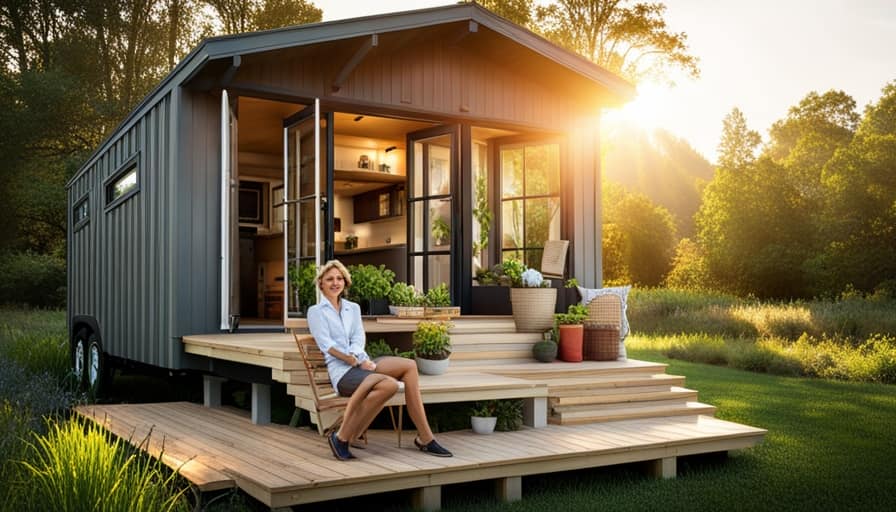
Understanding the Causes of Black Fly Infestations
To understand the causes of black fly infestations, we need to examine their preferred breeding sites and environmental conditions. These tiny pests thrive in moist and decaying organic matter, making the following places common breeding grounds for black flies:
-
Standing water: Black flies lay their eggs in standing water, such as ponds, lakes, and even puddles. It’s crucial to eliminate any stagnant water sources around your house to prevent infestations.
-
Overgrown vegetation: Black flies are attracted to dense vegetation, especially if it’s near water bodies. Trim shrubs, mow your lawn regularly, and remove any overgrown plants to discourage black flies from breeding.
-
Moist organic matter: Black flies lay their eggs in decomposing leaves, grass clippings, and other organic debris. Keep your yard clean and free of debris to reduce the likelihood of black fly infestations.
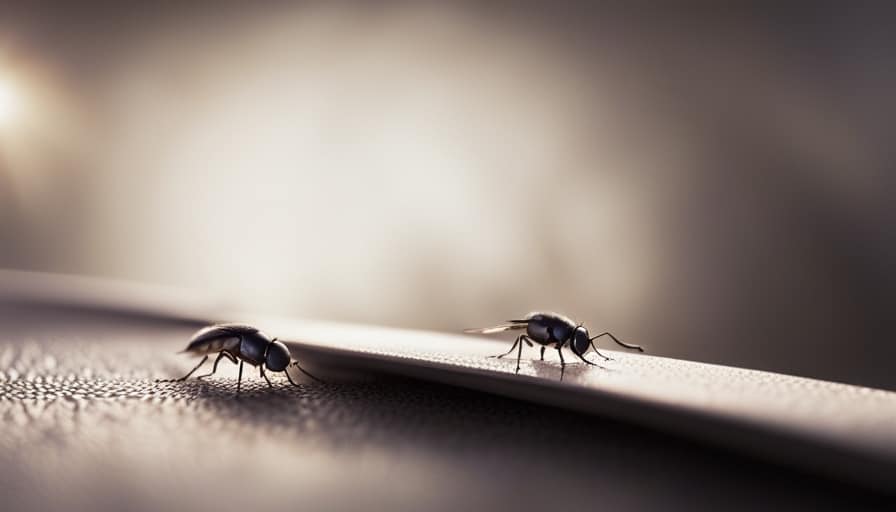
Understanding these common breeding grounds can help you identify and eliminate the causes of black fly infestations, keeping your home fly-free and comfortable.
Natural Remedies to Eliminate Tiny Black Flies
With a combination of proper sanitation and natural remedies, you can effectively eliminate tiny black flies from your house. One effective natural remedy is making homemade fly traps. These traps can be made using common household items such as apple cider vinegar, dish soap, and a plastic bottle. Simply cut the bottle in half, pour a mixture of apple cider vinegar and dish soap into the bottom half, and place the top half of the bottle inverted into the bottom half. The flies will be attracted to the scent of the vinegar, but the dish soap will prevent them from escaping. Another natural remedy is using essential oils for fly control. Oils such as lavender, peppermint, and eucalyptus have strong scents that repel flies. Simply mix a few drops of your chosen oil with water and spray it around areas where flies are present. By incorporating these natural remedies into your fly control routine, you can effectively get rid of tiny black flies in your house.
| Homemade Fly Traps | Essential Oils for Fly Control |
|---|---|
| – Apple cider vinegar and dish soap mixture in a plastic bottle | – Lavender, peppermint, and eucalyptus oils |
| – Flies are attracted to the vinegar scent but trapped by the soap | – Mix a few drops with water and spray in affected areas |
| – Simple and cost-effective solution | – Oils have strong scents that repel flies |
| – Dispose of trapped flies regularly | – Repeat application as needed |
Chemical Treatments for Getting Rid of Black Flies
By using chemical treatments, you can effectively eliminate black flies from your house. Here are three options to consider:
-
Chemical insecticides: These products are specifically designed to kill insects, including black flies. Look for insecticides that are labeled for use against flies and follow the instructions carefully. Apply the insecticide in areas where black flies are commonly found, such as around windows, doors, and other entry points.

-
Fly traps: There are chemical-based fly traps available that attract and capture black flies. These traps use a combination of chemicals and pheromones to lure the flies in and prevent them from escaping. Place the traps in areas where black flies are present, such as near garbage cans or in the kitchen.
-
Professional exterminator: If you’re dealing with a severe infestation or if chemical treatments haven’t been effective, it may be best to call a professional exterminator. They have access to stronger chemicals and can provide a targeted approach to eliminate black flies from your house.
Remember to always read and follow the instructions on chemical insecticides and traps, and consider the help of a professional if needed.
Preventing Future Infestations of Tiny Black Flies
My best advice for preventing future infestations of tiny black flies in my house is to maintain proper sanitation and eliminate potential breeding grounds.
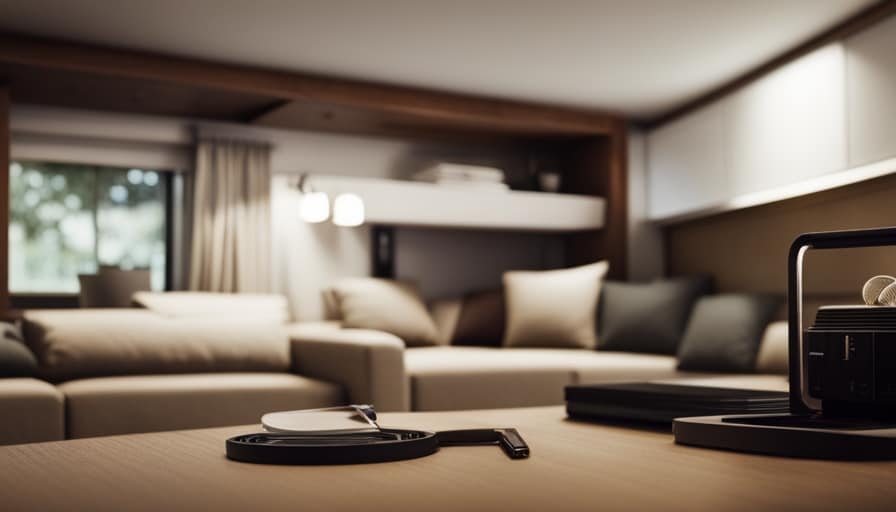
To maintain a fly-free environment, it’s important to keep your house clean and free from any food or organic debris. Make sure to regularly clean your kitchen, especially the countertops, sinks, and garbage disposal areas. Keep all food stored in airtight containers and promptly clean up any spills or crumbs.
Additionally, it’s crucial to identify and eliminate common breeding grounds for black flies in homes. These include standing water, damp areas, and overwatered plants. Regularly check for any leaks or moisture issues and fix them promptly.
Frequently Asked Questions
Can These Tiny Black Flies Harm Humans or Pets?
I’m not an expert, but I can share that tiny black flies in the house might be annoying, but they usually don’t harm humans or pets. It’s always a good idea to take preventive measures to control their presence.
Are There Any Specific Regions or Climates Where These Black Flies Are More Common?
In certain regions and climates, these pesky black flies tend to be more common. Understanding their preferences can help in devising effective strategies to keep them at bay.
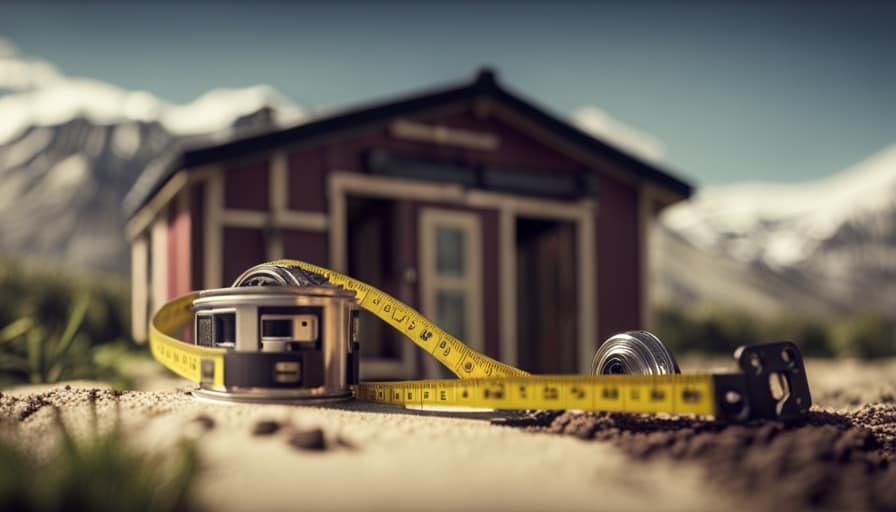
Can These Tiny Black Flies Cause Damage to Plants or Food?
Yes, these tiny black flies can cause damage to indoor plants as they lay their eggs in the soil. They can also contaminate stored food by landing on it and leaving behind bacteria.
How Long Does It Usually Take for Natural Remedies to Effectively Eliminate Black Flies?
On average, natural remedies can effectively eliminate black flies within a few days. However, the exact time may vary depending on the severity of the infestation and the specific remedies used.
Are There Any DIY Traps or Baits That Can Be Used to Catch and Eliminate These Tiny Black Flies?
There are several DIY fly traps and effective baits that can be used to catch and eliminate those pesky tiny black flies. Let me share some knowledge and details on how you can tackle this issue.
Conclusion
So there you have it, a plethora of methods to bid farewell to those pesky tiny black flies that have invaded your humble abode.
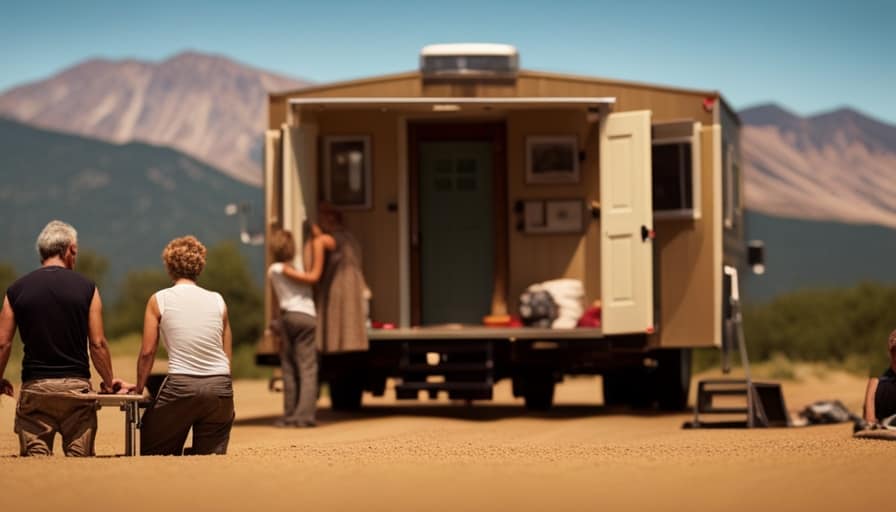
From natural remedies to chemical treatments, we’ve covered it all.
Now, armed with this knowledge, you can take control of your home and ensure these unwelcome guests never return.
Happy fly-free living!
I’m Theodore, and I love tiny houses. In fact, I’m the author of Tiny House 43, a book about tiny houses that are also tree houses. I think they’re magical places where imaginations can run wild and adventures are just waiting to happen.
While tree houses are often associated with childhood, they can be the perfect adult retreat. They offer a cozy space to relax and unwind, surrounded by nature. And since they’re typically built on stilts or raised platforms, they offer stunning views that traditional homes simply can’t match.
If you’re looking for a unique and romantic getaway, a tree house tiny house might just be the perfect option.
Beginners Guides
How Do I Get Rid of Tiny Bugs in My House

I have pests in my home that are causing me frustration! They are like small intruders that are appearing all over the place. However, do not worry, as I have conducted thorough research and found effective solutions to eliminate these bothersome pests.
In this article, I’ll guide you through identifying the types of bugs, understanding the causes of infestations, and providing natural and chemical remedies to eliminate them.
Say goodbye to those unwelcome guests and hello to a bug-free home!
Key Takeaways
- Identifying the specific pest by observing droppings or behavior is crucial in getting rid of tiny bugs in the house.
- Proper sanitation practices, such as keeping the kitchen and dining areas clean, are important in preventing bug infestations.
- Natural remedies like herbal insecticides and essential oils can be effective in deterring bugs without the use of harsh chemicals.
- Regular cleaning, sealing cracks, and maintaining a tidy home are essential in preventing future bug infestations.
Identifying the Types of Tiny Bugs in Your House
I can easily identify the types of tiny bugs in my house by observing their physical characteristics and behavior. One of the most common signs of an infestation is the presence of droppings or excrement. Different types of bugs leave different types of droppings, which can help determine the specific pest in your house.
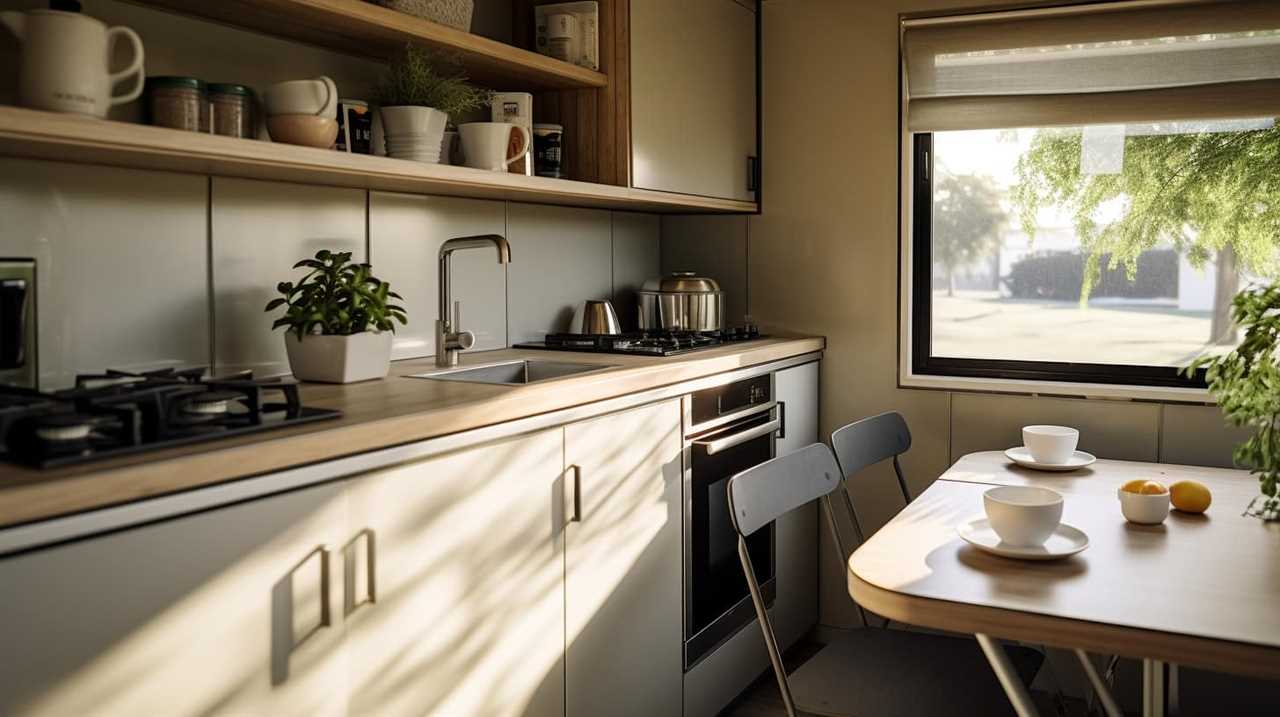
Additionally, observing the behavior of the bugs can provide valuable information. Some bugs are more active during the day, while others are nocturnal. Some bugs may prefer certain areas of the house, such as the kitchen or bathroom.
If you’re unsure about the type of bug in your house, it’s advisable to consult with professional exterminators who’ve the expertise to accurately identify and eliminate the pests.
Understanding the Common Causes of Bug Infestations
One of the most common causes of bug infestations is a lack of proper sanitation practices in the home. Understanding bug behavior and knowing their common household bug habitats can help prevent infestations.
Bugs are attracted to food sources, so it’s important to keep the kitchen and dining areas clean and free of crumbs and spills. Regularly emptying and cleaning garbage cans can also deter bugs from entering the home.

Additionally, bugs thrive in warm and moist environments, so it’s important to fix any leaks or damp areas in the house. Cluttered spaces provide hiding spots for bugs, so keeping the home organized and decluttered can help minimize their presence.
Natural Remedies to Get Rid of Tiny Bugs in Your House
To effectively eliminate tiny bugs in your house, try using natural remedies with ingredients such as vinegar and essential oils. Natural remedies are a great option for those who prefer non-toxic solutions and want to avoid harsh chemicals.
One effective natural remedy is using herbal insecticides. These insecticides are made from plant-based ingredients and can be sprayed in areas where bugs are commonly found, such as corners, cracks, and crevices.
Another natural remedy to consider is essential oils. Certain essential oils, such as peppermint, lavender, and tea tree oil, have insect-repellent properties. Simply mix a few drops of the essential oil with water and spray it around your house to deter bugs.
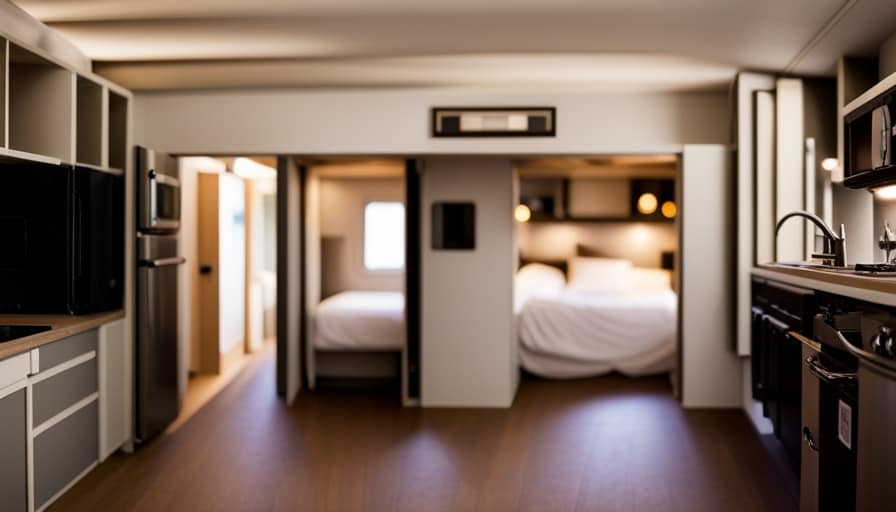
These natural remedies can be a safe and effective way to get rid of tiny bugs in your house.
Chemical Treatments for Eliminating Tiny Bugs
There are several effective chemical treatments available to eliminate tiny bugs in your house. When it comes to pest control methods, using insecticides is a common and efficient approach. There are various types of insecticides on the market, each with its own advantages and disadvantages.
It’s important to compare different insecticides to determine which one is best suited for your needs. Some insecticides target specific bugs, while others have a broad spectrum of effectiveness. Additionally, consider the application method and the duration of effectiveness. Some insecticides require direct contact with the bugs, while others can be used as a residual treatment.
It’s also essential to follow the safety instructions provided by the manufacturer when using chemical treatments to ensure the well-being of both humans and pets in your home.
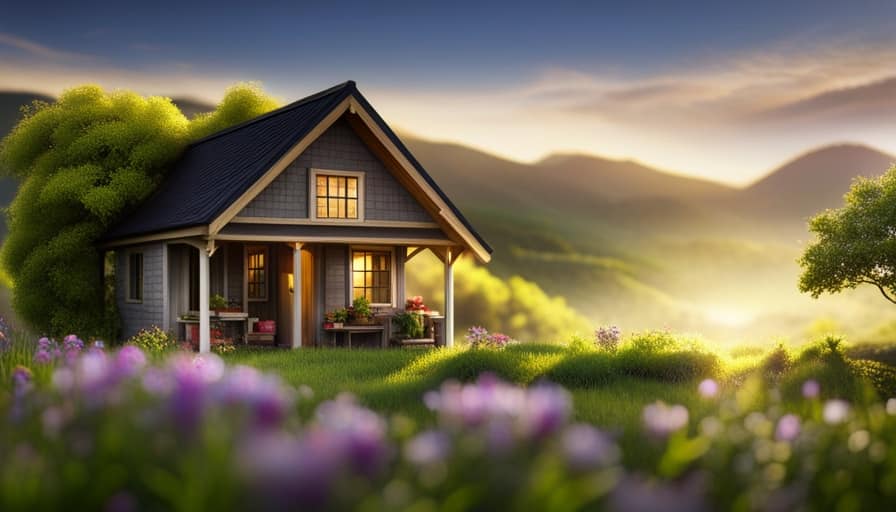
Preventing Future Bug Infestations in Your Home
I’ll make sure to regularly clean and seal any cracks in my house to keep bugs from coming in. Effective cleaning techniques are crucial in preventing bug infestations and creating a bug-free environment. Maintaining a clean and tidy home is essential to minimize the presence of bugs. Regularly vacuuming carpets and upholstery, sweeping and mopping floors, and wiping down surfaces will help eliminate any crumbs or food particles that may attract bugs. Additionally, proper food storage is essential to prevent bugs from being attracted to your kitchen. Keeping food in sealed containers and promptly cleaning up spills or crumbs will deter bugs from entering your home. Regularly inspecting and repairing any cracks or gaps in windows, doors, and walls will also help prevent bugs from finding their way inside.
| Cleaning Techniques | Maintenance Tips |
|---|---|
| Vacuum carpets and upholstery | Inspect and repair cracks or gaps |
| Sweep and mop floors | Properly store food to deter bugs |
| Wipe down surfaces | Regularly clean and seal cracks |
| Dispose of trash regularly | Keep a tidy and clutter-free home |
Frequently Asked Questions
Can These Tiny Bugs Cause Any Harm to Humans or Pets?
I’m not sure about the specific bugs in your house, but some tiny bugs can cause harm to humans or pets. It’s important to address the bug infestation promptly to protect your health and take preventive measures to keep them out.
How Long Does It Typically Take for Natural Remedies to Effectively Get Rid of Tiny Bugs?
It typically takes a few weeks for natural remedies to effectively eliminate tiny bugs. However, it’s important to note that results may vary. As for side effects, natural remedies are generally safe for humans and pets.
What Are Some Signs That Indicate a Bug Infestation in the House?
Signs of a bug infestation in the house include seeing live or dead bugs, finding their droppings or eggs, and noticing damage to furniture or walls. Preventing bug infestations involves keeping a clean and tidy home, sealing entry points, and using insect repellents.
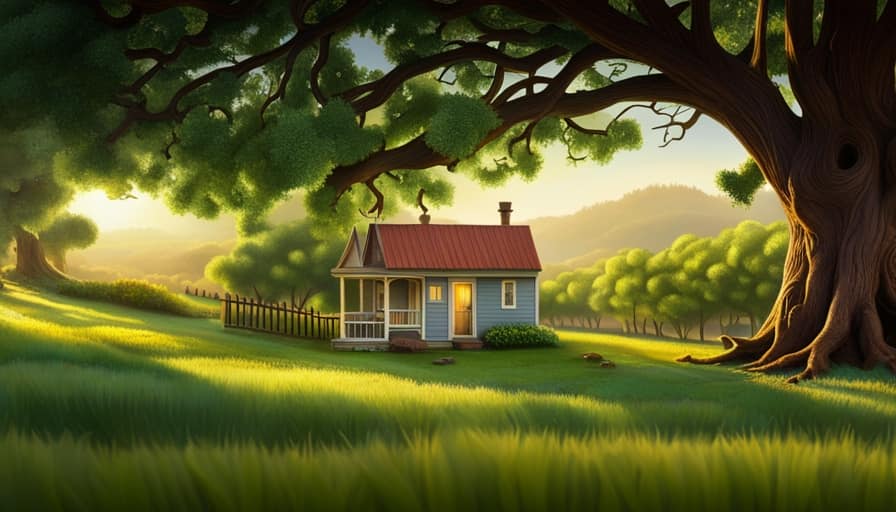
Are There Any Specific Areas in the House Where These Tiny Bugs Are Commonly Found?
In my experience, tiny bugs tend to hide in common areas like kitchen cabinets, bathrooms, and near windows. To prevent them, I recommend regular cleaning, sealing cracks, and keeping food stored properly.
Can Certain Weather Conditions or Changes in the Environment Attract These Tiny Bugs Into the House?
Certain weather conditions or changes in the environment can attract these tiny bugs into the house. Factors like warm and humid weather, open windows, and presence of organic matter can make your home more inviting for them.
Conclusion
In conclusion, while it can be frustrating to deal with tiny bugs in your house, there are effective ways to get rid of them.
By identifying the types of bugs and understanding the common causes of infestations, you can take natural or chemical treatments to eliminate them.

Additionally, taking preventive measures can help to avoid future bug infestations.
Remember, with the right knowledge and strategies, you can create a bug-free environment in your home.
I’m Theodore, and I love tiny houses. In fact, I’m the author of Tiny House 43, a book about tiny houses that are also tree houses. I think they’re magical places where imaginations can run wild and adventures are just waiting to happen.
While tree houses are often associated with childhood, they can be the perfect adult retreat. They offer a cozy space to relax and unwind, surrounded by nature. And since they’re typically built on stilts or raised platforms, they offer stunning views that traditional homes simply can’t match.
If you’re looking for a unique and romantic getaway, a tree house tiny house might just be the perfect option.
-

 Beginners Guides2 weeks ago
Beginners Guides2 weeks agoHow To Buy A Tesla Tiny House
-

 Energy Efficiency2 months ago
Energy Efficiency2 months agoBest Tiny Homes For Cold Climates
-

 Beginners Guides1 week ago
Beginners Guides1 week agoTiny House Nation Where Are They Now Stephanie
-

 Tiny House Resources (e.g., legalities, cost, insurance, FAQs)2 months ago
Tiny House Resources (e.g., legalities, cost, insurance, FAQs)2 months agoDo Tiny Homes Need Planning Permission?
-

 Beginners Guides3 weeks ago
Beginners Guides3 weeks agoFrom The Show Tiny House Nation How Many Keep Their Tiny House?
-

 Beginners Guides2 months ago
Beginners Guides2 months agoUsing a Climbing Net For Treehouse Construction
-

 Beginners Guides2 months ago
Beginners Guides2 months agoHow to Build a Treehouse Without Drilling Into the Tree
-

 Beginners Guides3 weeks ago
Beginners Guides3 weeks agoTiny House Nation Who Pays For The Houses






